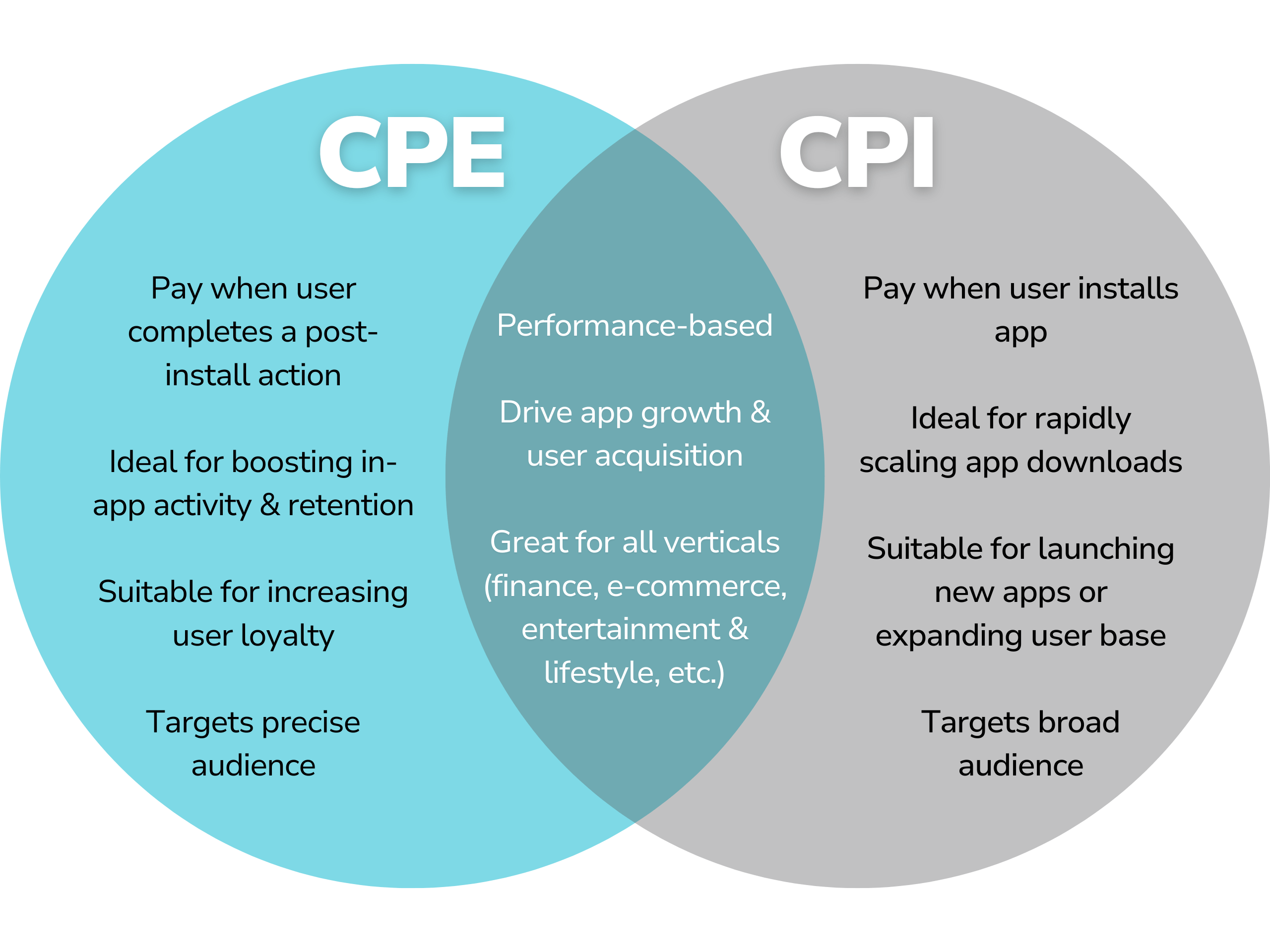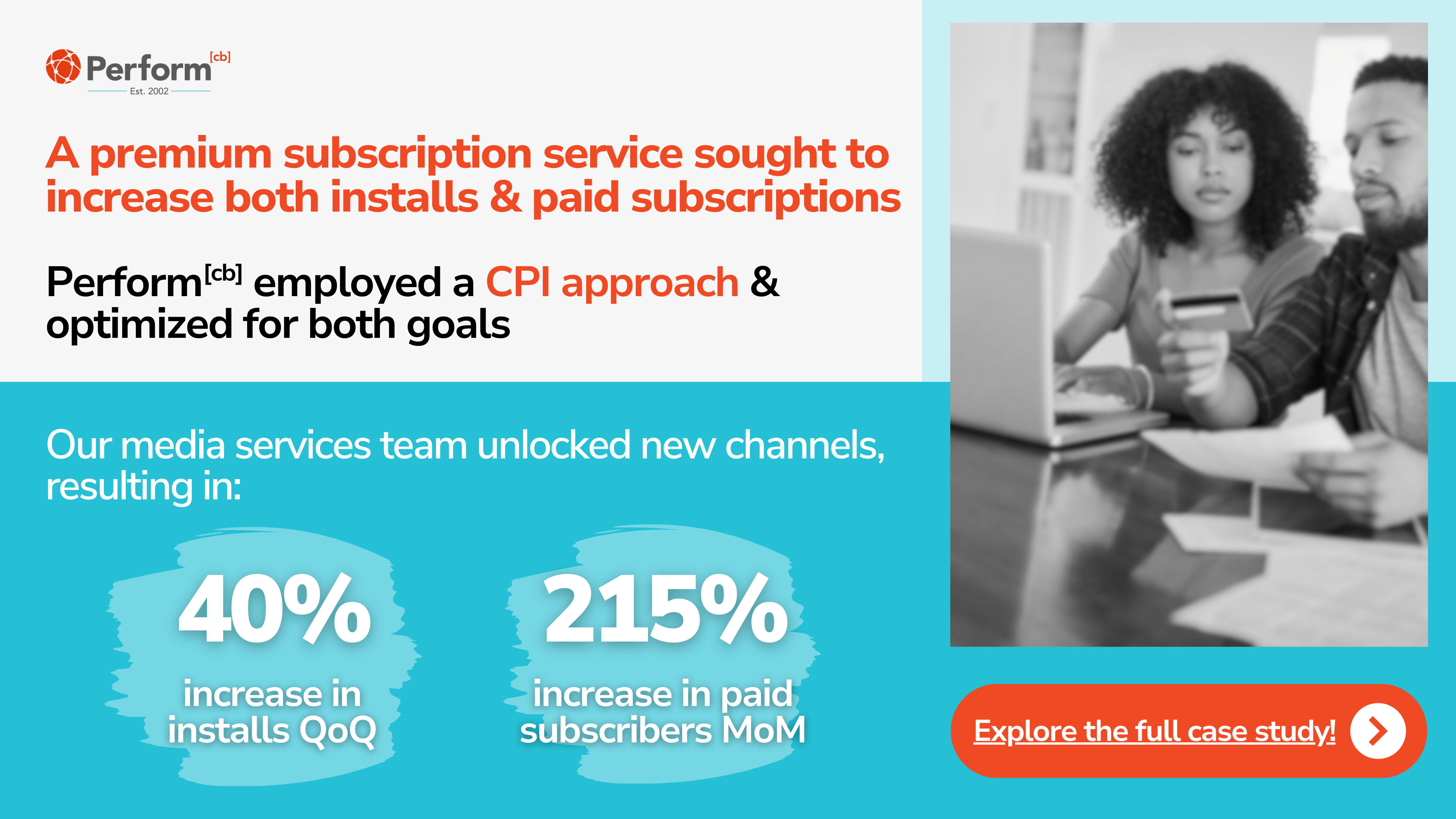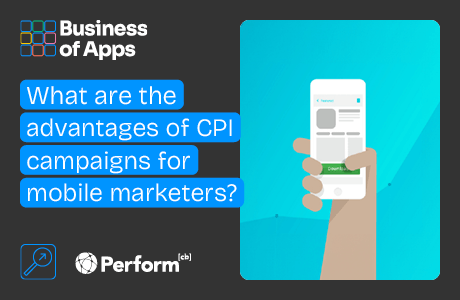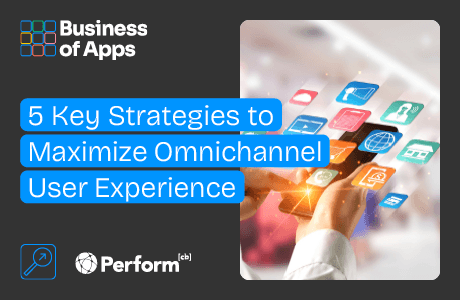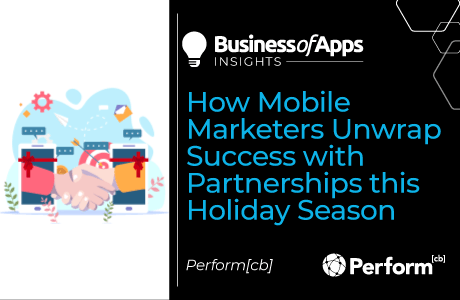As you develop your app’s user acquisition strategy, expect to encounter a critical crossroads: the cost-per-engagement (CPE) or cost-per-install (CPI) payment model. Each offers unique benefits, but how can you choose the best route based on your KPIs? Is it possible to run both campaigns simultaneously? Let’s dive in.
Understanding CPE and CPI campaigns
Cost-per-engagement (CPE) campaigns allow you to pay only when a user completes a specific action post-install, such as an in-app purchase, funded account, form submission, or sign-up. Since payment is directly tied to conversions, CPE campaigns are a low-risk option with high potential for a strong ROI. This model allows for flexibility, as marketers can tailor the KPIs they want to pay for, ensuring the campaign aligns with their business goals and delivers meaningful outcomes.
On the other hand, let’s say you’re launching a brand new app in a competitive market such as finance. The cost-per-install (CPI) model may be more enticing to start, as this campaign aligns payment solely around app installs. CPI campaigns excel at rapidly scaling an app’s user base. These campaigns can drive significant volume and boost app ratings, all while optimizing traffic towards installs that drive high-quality users who are more likely to engage with the app long-term.
CPE vs. CPI
Source: Perform[cb]
How to choose between CPE and CPI?
There isn’t a one-size-fits-all answer, but these guidelines can help:
Define goals
You should begin by clarifying what you want to achieve. If the focus is on driving post-install actions, CPE is the best bet. If boosting app installs is the primary goal, CPI is the way to go.
App maturity
CPE is suited for apps with an established user base looking to drive further in-app engagement, while CPI campaigns are ideal for new apps seeking to reach a large number of potential users.
Evaluate budget
CPE campaigns often require a higher investment since you’re paying for specific actions, but they typically deliver higher lifetime value in the long run. CPI campaigns can be more cost-effective by bringing in a larger volume of users in a short amount of time, while also at a lower cost per acquisition.
Assess targeting strategy
Understanding your app’s audience and their intent is crucial. If target users are more likely to perform valuable actions after installing the app, CPE campaigns will likely yield a better ROI. CPE campaigns benefit from precise, behavior-based targeting, while CPI campaigns thrive on broader, interest-based targeting to drive installs.
Think long-term
Consider the bigger picture. CPE campaigns can offer higher lifetime value – especially if users are continuously engaged, they’re more likely to convert within the app. CPI campaigns are excellent for rapid initial growth but may not always result in highly active or long-term users.
Can you launch and run both CPE and CPI campaigns simultaneously?
Absolutely! Combining CPE and CPI campaigns offers several key benefits:
Broaden reach
Running both CPE and CPI campaigns allows you to engage users throughout each stage of their buyer’s journey.
Optimize budget allocation
By leveraging both campaign types, you can allocate budget more effectively. Shift funds between CPE and CPI based on real-time performance metrics to maximize ROI and ensure you’re driving the most qualified users.
Gain a comprehensive view
With campaigns built around both CPE and CPI, this provides you with a holistic view of your app’s user acquisition performance. You can analyze which channels and strategies yield the best results for different objectives, helping refine your overall approach.
Maximize ROI
CPE campaigns ensure marketers are paying for tangible outcomes, while CPI campaigns generate a steady stream of new users. Together, they create a balanced user acquisition mix that drives both immediate growth and long-term value.
Scalability
Combining CPE and CPI campaigns offers you the flexibility to scale as your app or service grows. Marketers can adjust their strategy and budget to align with evolving goals, whether focusing on acquiring new users or optimizing for specific actions – or both!
Support long-term growth
CPI campaigns help build the user base, while CPE campaigns ensure those users engage meaningfully. This dual approach supports sustainable growth over time and helps maintain a strong, active user base.
You shouldn’t be limited to just one payment model. That’s why Perform[cb] uses a sophisticated optimization approach, running campaigns that prioritize both primary and secondary KPIs to drive optimal success. Let’s say you’re an app marketer aiming to boost installs as your primary goal and paid subscriptions as a secondary goal–your PCB Growth Manager would optimize traffic for both. As the campaign dataset grows, your strategies are continuously refined to ensure the sustained delivery of high-value users within a pay-for-results model.
Streaming service achieves show-stopping paid subscription volume
Source: Perform[cb]
CPE + CPI = A perfect match
The beauty of CPE and CPI lies in their complementarity. When integrated effectively, these two models create a powerful performance-based strategy.
Contact our team of user acquisition experts to learn how you can integrate both CPE and CPI strategies for optimal results.
Eager for more mobile marketing insights? Read Perform[cb]‘s Mobile Manual: Your Complete Guide to Mobile App User Acquisition.




